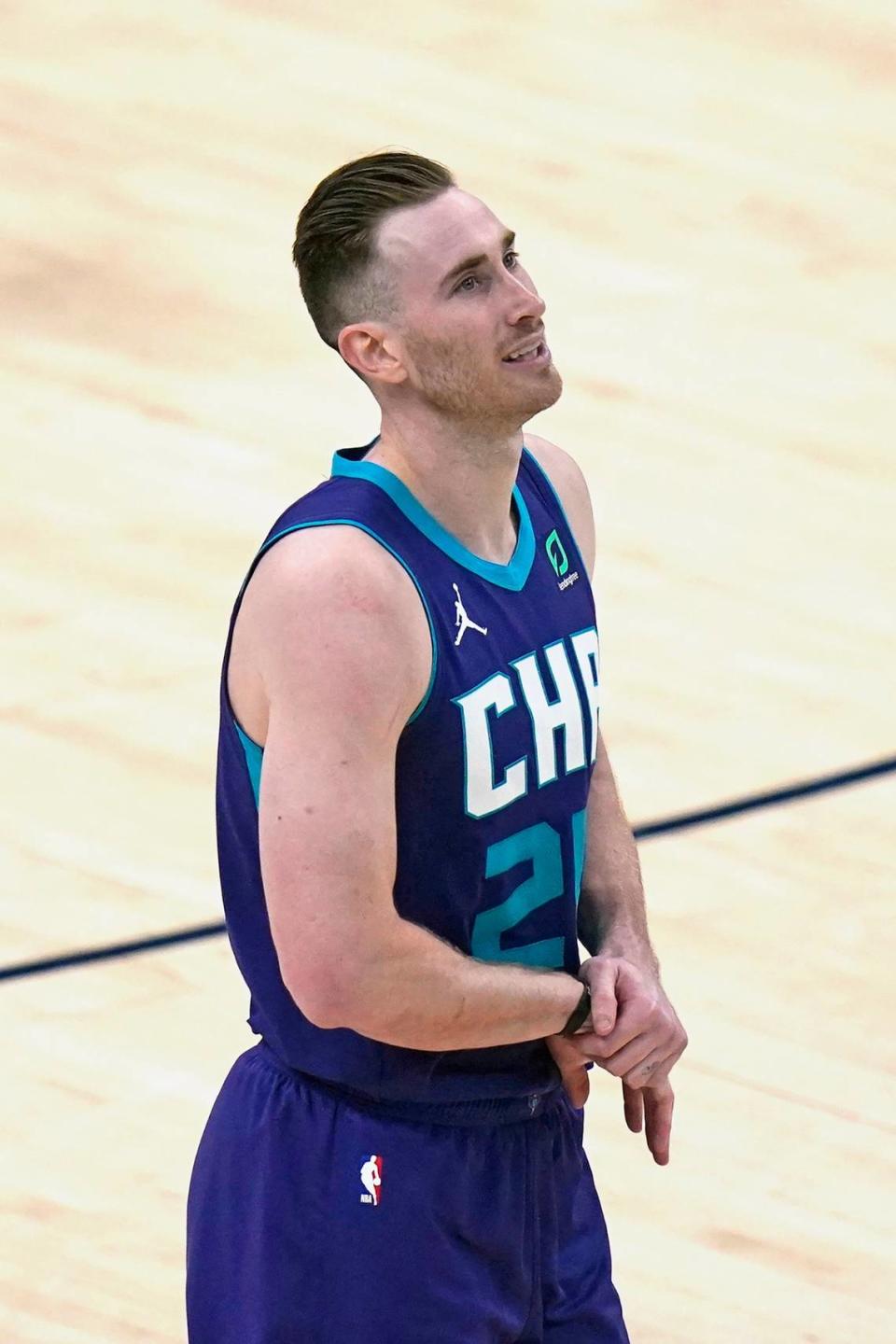Hornets need Gordon Hayward’s injury to heal quickly or risk a return to irrelevancy
Whether Gordon Hayward is the Charlotte Hornets’ most valuable player is debatable, but he is the hardest to replace.
That felt more than hypothetical following Monday’s 132-110 road loss to the Utah Jazz. With 10 minutes left and the Hornets trailing by 10, small forward Hayward hit the floor hard, off a foul by Utah’s Georges Niang. Replays showed Hayward breaking his fall with his right hand, then grabbing his wrist in what looked like severe pain.
The Hornets called a timeout to assess Hayward’s injury. Then, he went to the training room and never returned to the game. Charlotte said Hayward aggravated a prior hand injury.
Everyone tried not to assume the worst, but this was coach James Borrego’s comment post-game: “Obviously, we are all concerned.”
They certainly should be. Hayward isn’t just this team’s leading scorer (21.9 points per game), he is the connector between everything they do. Rookie LaMelo Ball is the Hornets’ most entertaining player and Terry Rozier has the clutch gene. But Hayward plays with a precision that bails the Hornets out of numerous bad half-court possessions.
He is also the only natural fit as starting small forward. Miles Bridges played there his first two NBA seasons, but that isn’t optimal. The way Bridges has thrived as this team’s super-sub at power forward guides his future.
Everyone tried to be positive Monday night. As Ball said, “We asked (Hayward) and he said he was feeling kind of good. So we’ll just see from there, I guess.”
A significant Injury history
The Hornets knew when they recruited Hayward as a free agent that there was an injury history. He suffered a dislocated ankle and broken leg at the outset of his three seasons with the Boston Celtics in the fall of 2017. When Hayward returned the next season, young Celtics Jayson Tatum and Jaylen Brown had already advanced so quickly that Hayward became the third wing option, rather than a star.
Part of why Hayward opted out of his Celtics contract and agreed to be a Hornet was to show he could still be the centerpiece of an NBA roster.
For the most part, he has succeeded. He’s at the fringe of the All-Star discussion in the Eastern Conference. Hayward and Ball have improved the talent base enough that the Hornets hover around .500 with a shot at the playoffs.
But Hayward’s first 28 games in Charlotte have also demonstrated he’s going to get hurt. Over three months, he’s had a broken a finger (in the preseason), missed a game against the Toronto Raptors with a hip injury, and missed another against the San Antonio Spurs with a sore lower back.
He also had minor foot surgery between the end of last season and the outset of free agency.
It’s no surprise he has dings; he’s 30 years old and has played more than 20,000 NBA minutes. That’s abundant mileage.
Reliability, availability
From his regular-season debut as a Hornet — playing with that broken finger — Hayward has demonstrated reliability. He constantly makes smart decisions with the ball, guards his position, and hits tough shots in traffic.
He’s also started getting to the foul line with frequency, something he did regularly with the Jazz before leaving for Boston.
The open question is more of availability, not just now but over the length of a four-year, $120 million contract.
No one in the Hornets organization expects Hayward to be better at 34 than he now is at 30. This season and the next one figure to be the prime of his time in Charlotte.
They don’t just value him, they desperately need him, because no one else does what he does.
Hopefully, that hand heals fast. Because this brutal six-game trip through the West could spin them right back to their irrelevant recent past.









